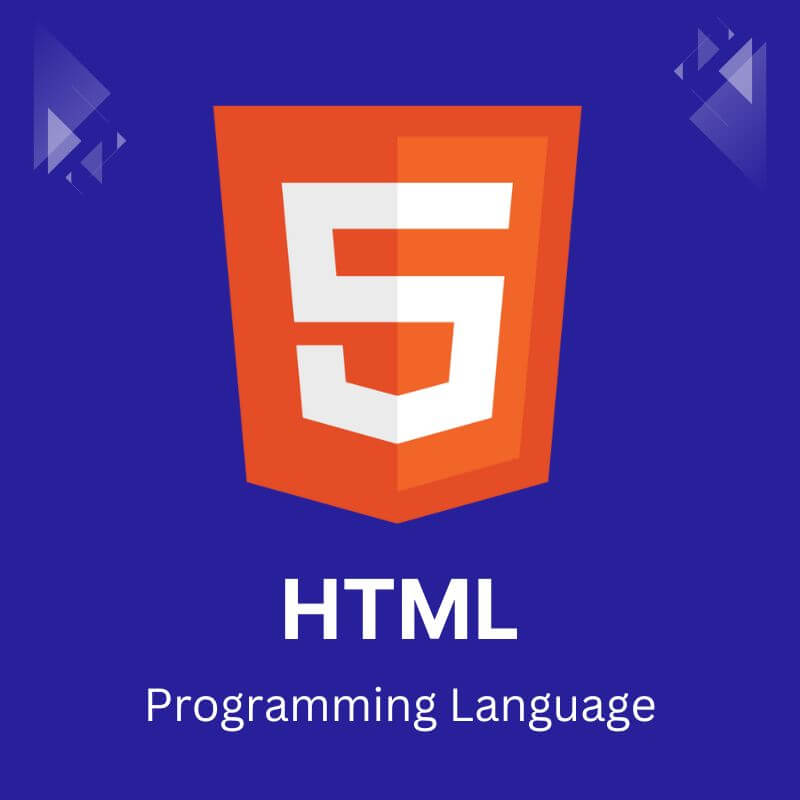As the building blocks of the World Wide Web, HTML (Hypertext Markup Language) is one of the most fundamental and important languages for any web developer to master. At its core, HTML provides the structural framework for creating websites by allowing you to define headings, paragraphs, lists, links, images, and other content elements.
While HTML on its own doesn’t control the styling or interactivity of a webpage, it lays the crucial groundwork that cascading style sheets (CSS) and JavaScript build upon.
Take a look at all the topics that are discussed in this article:
Whether you’re brand new to web development or brushing up on your skills, understanding HTML is the first step to creating well-structured, accessible websites.
HTML Versions
HTML has evolved over the years, with several versions released to improve and expand its capabilities.
Here is an overview of the major HTML versions:
HTML 1.0 (1991)
- The first version of HTML was introduced by Sir Tim Berners-Lee, the inventor of the World Wide Web. HTML was just a simple markup language with a small set of tags.
- Focused on basic text formatting like headings, paragraphs, and lists.
HTML 2.0 (1995)
- Added more structural elements like form controls, tables, and image maps.
- Allowed better formatting and layout capabilities.
HTML 3.2 (1997)
- Introduced minimal support for tables, text flow around images, and super/subscript.
- The first version is to try and formalize HTML as a standard.
HTML 4.01 (1999)
- A major revision that became an official standard.
- Added ability to style elements, embed objects, and improve accessibility.
- Introduced the basics of HTML forms and frames.
XHTML (2000)
- An XML-based reformulation of HTML 4.01.
- Stricter syntax rules to conform to XML standards.
- Never gained widespread adoption due to its stricter error handling.
HTML5 (2014)
- A major overhaul and extension of HTML.
- Added semantic elements like <header>, <nav>, <article>, <aside>.
- Incorporated audio, video, and canvas for media/graphics.
- Improved forms, web storage, and offline capabilities.
- Emphasis on creating one language for all platforms/devices.
These continue evolving to add more accessibility features, improve media handling, and keep up with modern web demands.
With each new version, HTML aimed to provide better structure, more semantic meaning, rich multimedia support, and alignment with changing technology needs. HTML5 was particularly transformative in extending HTML for mobile and cutting-edge applications.
Why to Learn HTML?
There are several compelling reasons to learn HTML (Hypertext Markup Language):
1. Web Development
HTML is the backbone of the World Wide Web. It provides the structure and content for web pages. Learning HTML is essential if you want to create websites, web applications, or any content for the internet.
2. Content Management
Many Content Management Systems (CMS) like WordPress, Drupal, and Joomla use HTML as the underlying language for creating and managing website content. Understanding HTML will help you customize and tailor your website more effectively.
3. Accessibility
HTML incorporates accessibility features that make web content accessible to users with disabilities. Learning proper HTML practices ensures that your content is inclusive and reaches a wider audience.
4. Search Engine Optimization (SEO)
Search engines like Google rely on HTML to understand and index web content. Using proper HTML markup and structure can improve your website’s visibility and ranking in search engine results.
5. Career Opportunities
HTML is a fundamental skill for web developers, front-end engineers, and web designers. Learning HTML can open up career opportunities in these fields, as well as in areas like digital marketing, content creation, and e-commerce.
6. Multimedia Integration
HTML allows you to embed and integrate various multimedia elements like images, videos, and audio into your web pages, enhancing the user experience.
7. Basic Understanding
Even if you don’t plan to become a web developer, having a basic understanding of HTML can help you comprehend how the web works and enable you to make minor edits or tweaks to web content when needed.
8. Future Learning
HTML serves as a foundation for learning other web technologies like CSS (Cascading Style Sheets) and JavaScript, which are essential for creating modern, interactive, and visually appealing websites.
Advantages of HTML
- Universal Compatibility: HTML is universally supported by all web browsers, ensuring consistent content display across various devices and platforms.
- Ease of Learning: HTML has a simple syntax, making it accessible for beginners, and facilitating a quick entry into web development.
- Standardization: Governed by the W3C, HTML’s standardization promotes consistency in how web pages are interpreted, enhancing interoperability.
- SEO-Friendly: Proper use of HTML elements and semantic tags improves search engine optimization, aiding in better visibility on search engine results pages.
- Versatility: HTML easily integrates with technologies like CSS and JavaScript, allowing developers to create diverse and interactive web experiences.
Disadvantages of HTML
- Limited Functionality: HTML focuses on structure and content, lacking advanced features like complex programming logic and database interactions.
- Security Concerns: HTML alone may not provide robust security, leaving websites susceptible to threats such as XSS or injection attacks.
- Browser Compatibility Issues: While HTML is standardized, browser interpretation variations may lead to issues, requiring developers to address browser-specific challenges.
- Limited Multimedia Support: Basic multimedia support exists, but advanced features may necessitate additional technologies or plugins.
- Static Structure: Primarily designed for static content, building dynamic, responsive applications may require additional technologies and result in more complex development processes.
Hello World using HTML
Here’s a basic “Hello World” program in HTML:
<!DOCTYPE html>
<html>
<head>
<title>Hello, World!</title>
</head>
<body>
<h1>Hello, World!</h1>
<p>This is a basic HTML document.</p>
</body>
</html>
This HTML document consists of the following components:
- <!DOCTYPE html>: Declares the HTML5 document type.
- <html>: The root element that wraps the entire HTML content.
- <head>: Contains meta-information about the HTML document, such as the title.
- <title>: Sets the title of the HTML document (displayed in the browser tab).
- <body>: Contains the visible content of the HTML document.
- <h1>: Represents a top-level heading.
- <p>: Represents a paragraph of text.
In this example, the document title is set to “Hello, World!”, and the body contains a top-level heading (<h1>) with the text “Hello, World!” and a paragraph (<p>) with additional text. When you open this HTML document in a web browser, you’ll see a webpage with the “Hello, World!” heading and the accompanying paragraph.
Applications of HTML
HTML (Hypertext Markup Language) has several applications, primarily in the field of web development and online content creation.
Here are some of the key applications of HTML:
1. Web Page Development: The primary application of HTML is to create and structure web pages. It provides the basic building blocks for creating the content and layout of websites.
2. Website Creation: HTML is used in conjunction with CSS and JavaScript to develop complete websites, ranging from simple static sites to complex, dynamic web applications.
3. Online Documentation: HTML is widely used for creating online documentation, user manuals, and help files, making it easy to distribute and access information over the internet.
4. Email Newsletters and Campaigns: HTML is often used in the creation of email newsletters, marketing campaigns, and promotional materials, allowing for formatted and visually appealing content.
5. Ebooks and Digital Publications: With the rise of digital publishing, HTML is used to create ebooks, online magazines, and other digital publications, enabling cross-platform compatibility and accessibility.
6. Mobile App Development: HTML, along with CSS and JavaScript, is used in the development of hybrid mobile applications, which are essentially web apps packaged as native apps.
7. Browser-based Games and Applications: HTML, combined with JavaScript and other web technologies, can be used to create interactive games, tools, and applications that run directly in web browsers.
8. Multimedia Integration: HTML provides the ability to embed multimedia elements like images, videos, and audio into web pages, enhancing the user experience and enabling content-rich websites.
9. Web-based Presentations and Slideshows: HTML can be used to create online presentations and slideshows, making it easier to share and distribute information over the internet.
10. Content Management Systems (CMS): Many popular Content Management Systems like WordPress, Drupal, and Joomla use HTML as the underlying language for creating and managing website content.
While HTML is primarily focused on structuring and organizing content for the web, it is often used in combination with other technologies like CSS for styling and JavaScript for interactivity and dynamic functionality, creating a complete and rich web experience.


